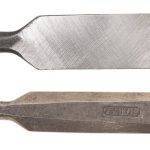We may receive a commission when you use our affiliate links. However, this does not impact our recommendations.
Soup Up Your Shop
The right accessories for maximizing your performance and safety.
By Dave Munkittrick
Here at American Woodworker we see a lot of tools and
accessories.We’ve been impressed by how the right
accessories—either store-bought or shop-made—can dramatically
improve the performance, convenience and safety
of shop tools.
Most of us have something we’d like to change or
improve about our shop equipment.What we’ve done is
assemble a list of accessories, tune-ups and shop-made
attachments that solve some of the more common problems.
Some are cheap, some are expensive, all work well.
Look for the ones that fit your needs and give ’em a try.
Drill Press
A drill press is a common tool in
most woodworking shops, but
many have features that are
designed primarily for
metalworking. Here are a few
tips that’ll make your drill press
more user-friendly and effective.
Tablesaw
A contractor’s tablesaw is
the heart of many
woodworking shops. It has
the power and capacity to
handle most projects and
best of all, it’s affordable.
Here are some accessories
that can turn a good
contractor’s saw into a
great one.

1. A Better Fence. 3. Overarm Blade Cover. 5. Precision Miter Gauge. 7. Mobile Base. Most of us dream of a big shop space, but
|

2. Splitter. 4. Zero-Clearance A zero-clearance throat plate eliminates 6. Storage Wing. 8. Link Belt and Pulleys. |
Bandsaw
A bandsaw is an incredibly versatile
machine. From slicing thin veneer off of
solid stock to cutting intricate curves in
scrollwork, the bandsaw can do it all. Still,
there are a few things we wish all bandsaws
came with. Here are a few of our favorites.
Dust Collector
Most dust collectors should be thought of as a kit.They often
aren’t ready to do the job we expect right out of the box.
Inadequate bags, leaky joints and poor seals can turn your dust
collector into a dust spewer.These tips are sure to keep your
shop and lungs cleaner.
Lathe
Here’s a host of simple
upgrades that’ll make an
open-stand lathe more
stable, more comfortable
and more versatile.
Sources
(Note: Product availability and costs are subject to change since original publication date.)
Drill PressWoodcraft Supply, woodcraft.com 800-225-1153, Link Belts, #25N67. Rockler Hardware, rockler.com, 2-in. hardwood balls, # 214935 (other Woodworker’s Dust CollectorAmerican Fabric Oneida Air Systems, 800-732-4065, Penn State Industries, pennstateind.com, 800-377-7297, Long Ranger III remote control, LatheThe Woodturners Catalog, woodturnerscatalog.com, 800-551-8876, Oneway Stronghold Chuck, (various Woodcraft, woodcraft.com, 800-225-1153, Floor Stand Suction Head, #812399. The Woodturners Catalog, woodturnerscatalog.com, 800-551-8876, Oneway Revolving Center, 130-2100, Grizzly Industrial, Inc., grizzly.com, 800-523-4777, Anti-Fatigue Mats, 27 in. x 36 in., |
TablesawHighland Woodworking, highlandwoodworking.com, 800-241-6748, 40-in. Home Shop Fence, # 78-931; Excalibur Telescoping Overarm Blade Tools On Sale, 7cornershdwe.com, 800-328-0457, T-Square Anti-kickback Snap-in Spreader; Delta Mobile Base, #DL50-277; Penn State Woodhaven, woodhaven.com, 800-344-6657, Woodhaven Miter Gauge Deluxe Starter Incra Precision Tools, incra.com, 972-242-9975, Incra’s Miter Gauge 2000; Woodcraft Supply, woodcraft.com, 800-225-1153, Contractor’s Saw Performance Package BandsawLee Valley Tools, leevalley.com, 800-871-8158, Rare-Earth Magnets, 1/2″ x 1/8″, Highland Woodworking, highlandwoodworking.com, 800-241-6748, Quik-Crank Bandsaw Tensioner, |
| This story originally appeared in American Woodworker December 2001, issue #91. |
Here are some supplies and tools we find essential in our everyday work around the shop. We may receive a commission from sales referred by our links; however, we have carefully selected these products for their usefulness and quality.











































